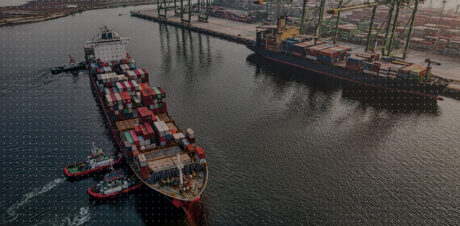Over the years, certain types of advanced semiconductors have emerged as critical to modern defense and intelligence systems, putting them at the forefront of the United States’ strategic competition with China. As political tensions rise, access to these building blocks of modern computing becomes a matter of national security.
In 2022, the U.S. passed the CHIPS and Science Act in an effort not only to control China’s access to advanced microchips and chipmaking tools, but also to fuel chip research and development domestically. Since then, new regulations like Biden’s executive order on outbound investment in China and BIS’s recent string of export rules present mounting compliance challenges to U.S. companies.
Economic historian and acclaimed author of Chip War Chris Miller will be giving a keynote address at our upcoming annual symposium. He also recently returned to the Sayari stage last month with updates on semiconductor regulations and how enterprises are working to meet compliance requirements. Our conversation with Chris offered many valuable insights to businesses looking to navigate new and emerging chip restrictions, but here’s a preview of some of the themes he’ll be discussing at the Sayari Symposium.
Q: What recommendations do you have for companies that need to comply with semiconductor controls? What strategies should they implement to combat this risk?
Chris Miller:
One strategy companies are trying to adopt is spending more time understanding who their customers actually are. Many companies in the past didn’t see themselves as dealing in dual use goods, and so they spent substantially less time on compliance issues than they need to today, as more regulations are deployed to the types of products that they sell.
For example, many of the types of chips that have been ending up in Russian missiles or drones are found in consumer devices. And so the companies that sold them primarily thought of themselves as consumer device companies, and now they’re having to deal with a new reality that they seem to be dealing in dual use goods, and need to build up compliance as a result.
Another example is with the role of distribution networks in the semiconductor industry for certain types of chips. There’s a lot of variation, but for certain ones, especially the more widely produced and commoditized types of semiconductors, you often find a chip going through multiple distributors before it reaches the end product. While there are understandable business reasons for that, there are several challenges that that brings up as well. I think one is just on the business side. Companies as a result don’t often have much visibility into their end customers. This makes it more difficult to forecast supply and demand and more difficult to know what their customers actually want in terms of products.
Q: What are the similarities or differences between transshipment risk in Russia and China?
CM:
I think when it comes to Russia, the transshipment risks are greater because the types of chips that Russia is trying to import are cheaper and much more broadly available, therefore they’re more plausibly found in third countries. Now, there are instances like the Maldives having been discovered to have exported 10s of millions of dollars of chips to Russia over the course of 2022 and 2023. Given that the Maldives have no industry whatsoever, that clearly was an instance of simple transshipment and not legitimate trade. It is more difficult to ascertain if you’re sending a shipment of semiconductors to Turkey or to Kazakhstan, where there is legitimate domestic manufacturing, if it’s for something that’s less legitimate. Ascertaining any individual shipment and its eventual destination is a much more challenging task that Russian entities have a strong incentive to obfuscate.
For China, the challenge is somewhat different. In China, most chip shipments are still legal. It’s only the import of ultra high-end GPUs that are used for training AI systems that are restricted. With these, transshipment is not impossible, but there’s a smaller number of countries through which transshipment won’t immediately raise red flags because the number of countries that are buying these high-end GPU chips in large volumes is quite limited. If you were to see a shipment of thousands of GPU chips going to Cambodia, you would naturally ask, “are there any data centers in Cambodia capable of using these chips?” And the answer is no. So that transshipment problem is certainly present in the China case, but I think it’s more limited. We certainly do see some amount of smuggling of chips into China, but I think the magnitude is substantially smaller than the magnitude we see in Russia.
Q: Is there a noticeable difference in diversion methods for equipment, chips as products, and chips as components?
CM:
I think that the big difference between chips and equipment is size and complexity, which makes the process of diversion substantially harder for equipment. There are many countries in the world where if there was equipment shipped to it would raise an immediate red flag because there are no chip making facilities, even if you’re talking about pretty old and lower end chipping equipment. So if you’re focused on the equipment side, the number of places you have to look is smaller. Usually, there are not very many of these transactions that are happening under the radar, so long as your radar is turned on. I think the challenge that companies have faced is that they realize they’ve got to not only illuminate their initial sales, but they’ve also got to try to illuminate the secondhand markets for tools that were produced, five or 10, or in some cases 20 or 30 years ago.
Whereas for chips themselves, you can ship most types of chips to any country in the world and you could at least imagine a legitimate reason for those types of shipments. Chips are a much more challenging issue to deal with simply because the potential list of legitimate customers is far larger. Therefore, the ability to immediately screen what is illegitimate versus what is not is harder. However, both equipment companies and chip companies are being subjected to much more scrutiny than ever before, both in terms of explicit regulatory demands and in terms of public opinion.
Q: Given how fast AI can advance, are there questions that industry or policymakers should be thinking about now to determine if our regulatory frameworks will still work?
CM:
Whether you like it or not, the government moves slowly. That’s just the reality of how complex bureaucracies work. I think the best example of this is the updating of the controls that were put in place on China in 2022. It’s now been widely discussed that immediately after those controls, which set a given threshold, companies were able to produce an amount of chips right below that threshold. But then it took the U.S. an entire year to devise the new regulation and a lot continued to change during that year. I think people in the government certainly wished that it could have happened faster.
However, it was a useful case study on the speed at which the government can actually make decisions. The Commerce Department has now implied that it will anticipate regularly updating these types of export controls. But the rate of change in technology in the private sector is always going to be more rapid than the rate of change in export control regulations. This needs to be taken into account when you try to assess how much can actually be accomplished in these spheres. The private sector is able to find workarounds, which of course companies have a strong incentive to do, and governments will always be a bit behind the curve in responding to this.
If you’re interested in hearing more from Chris Miller on the ever-changing landscape of semiconductor controls, join us at our 2nd Annual Sayari Symposium on June 6 in Washington, D.C. to hear his keynote address.


